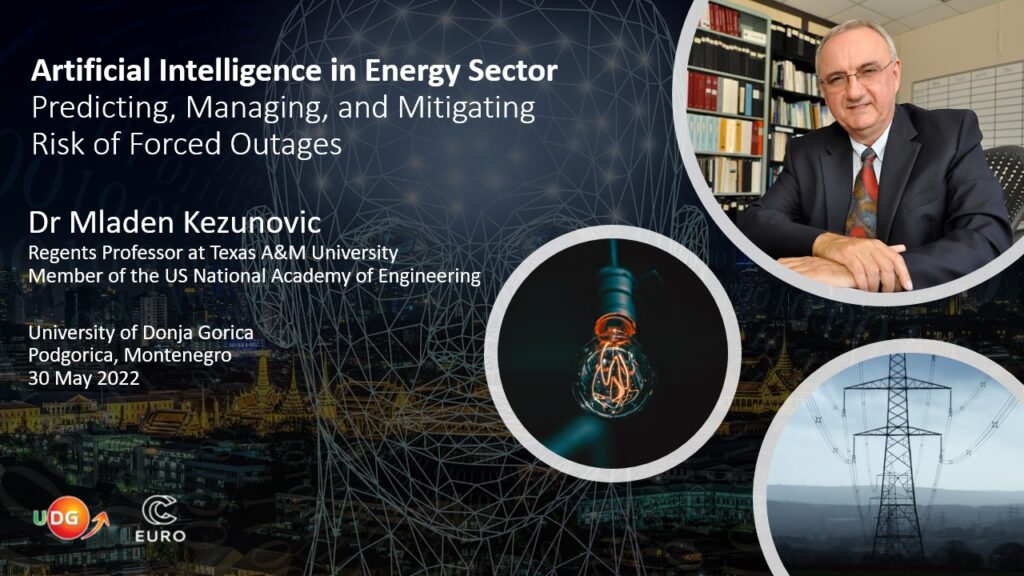University of Donja Gorica and HPC NCC Montenegro invited a special guest, prof. dr Mladen Kezunović, a Regents Professor at Texas A&M University and Member of the US National Academy of Engineering. Prof. Kezunović will give talk on Artificial Intelligence in Energy Sector. This lecture is part of the series of events pertaining to HPC/AI applications in the priority domains of Motenegrin S3 and in line with the EuroCC NCC Montengro goal for engaging industry with respect to HPC/AI applications . The event is planned for 9:30h on 30 May 2022. Due to a limited number of seats, please register using the form is available here. We are also providing a link for online access to the lecture on YouTube (click here for live video).
Summary – The topic of Artificial Intelligence/Machine Learning (AI/ML) and associated analytics rose to prominence as the huge amounts of data became available through the space exploration, weather projections and medical biogenetic investigations. The humans deployed AI/ML to create data models to automate the data analysis, which may be infeasible to do manually or by simulations of physical systems only. Social media and commercial outlets such as Google, YouTube, Facebook, Twitter, Amazon and others have used for a while AI/ML the analysis of huge data sets to develop data models to predict consumer behavior. The power system operators are lately experiencing huge amounts of data obtained through field measurements and external sources such as variety of weather and other ambient data.
This talk focuses on the role of AI/ML data analytics in managing and controlling future power system by predicting power system outages at different spatiotemporal scales. The importance of outage prediction is explored, and examples how the AI/ML analytics are recently used to successful predict the risk of transmission and distribution faults are explored. The use of the risk prediction maps to manage the risk of forced outages and mitigate their impacts, as well as how the risk analysis can be used to schedule participation of distributed energy resources to mitigate outages is illustrated with a few examples. The future trends are also outlined.


